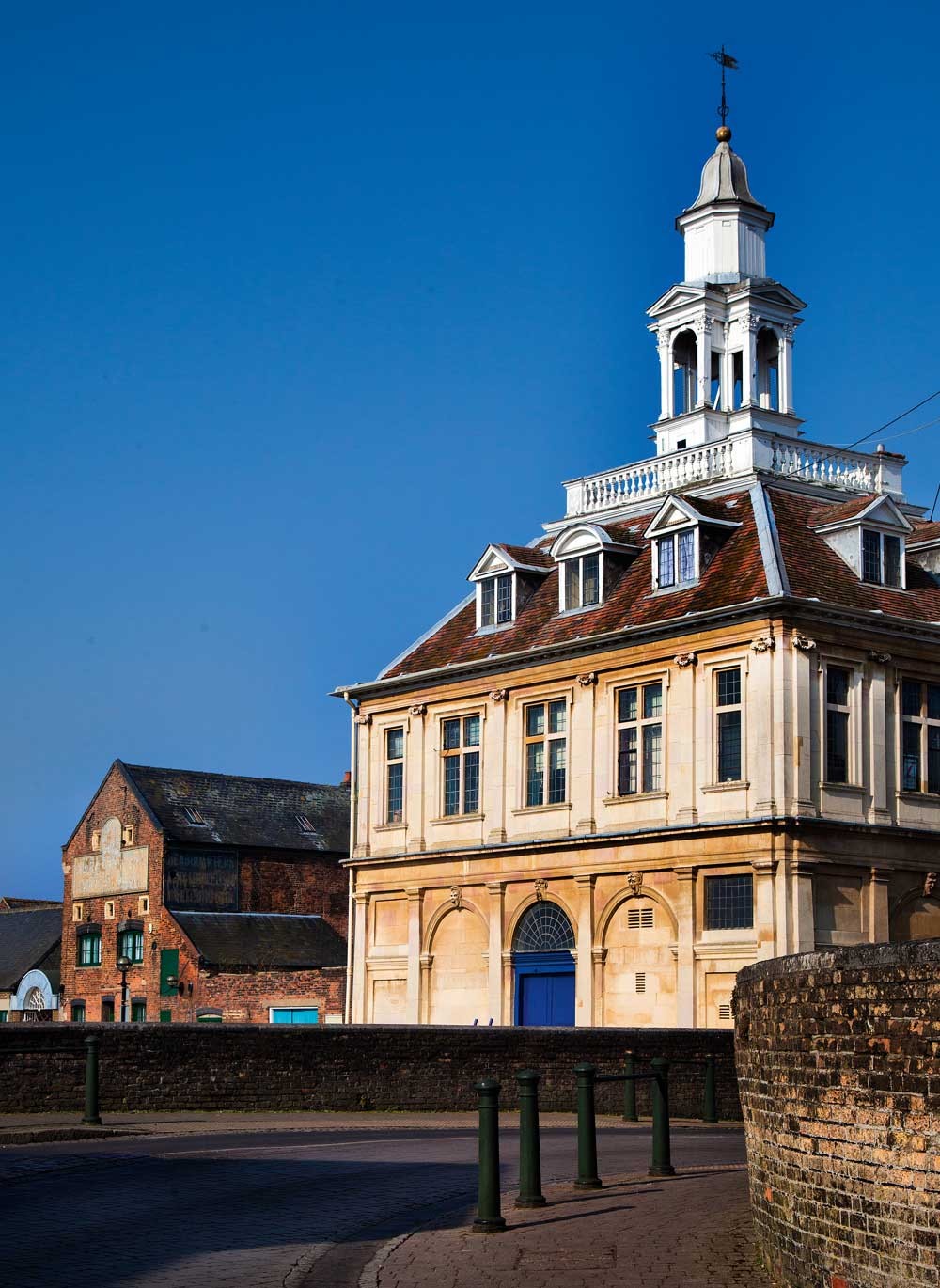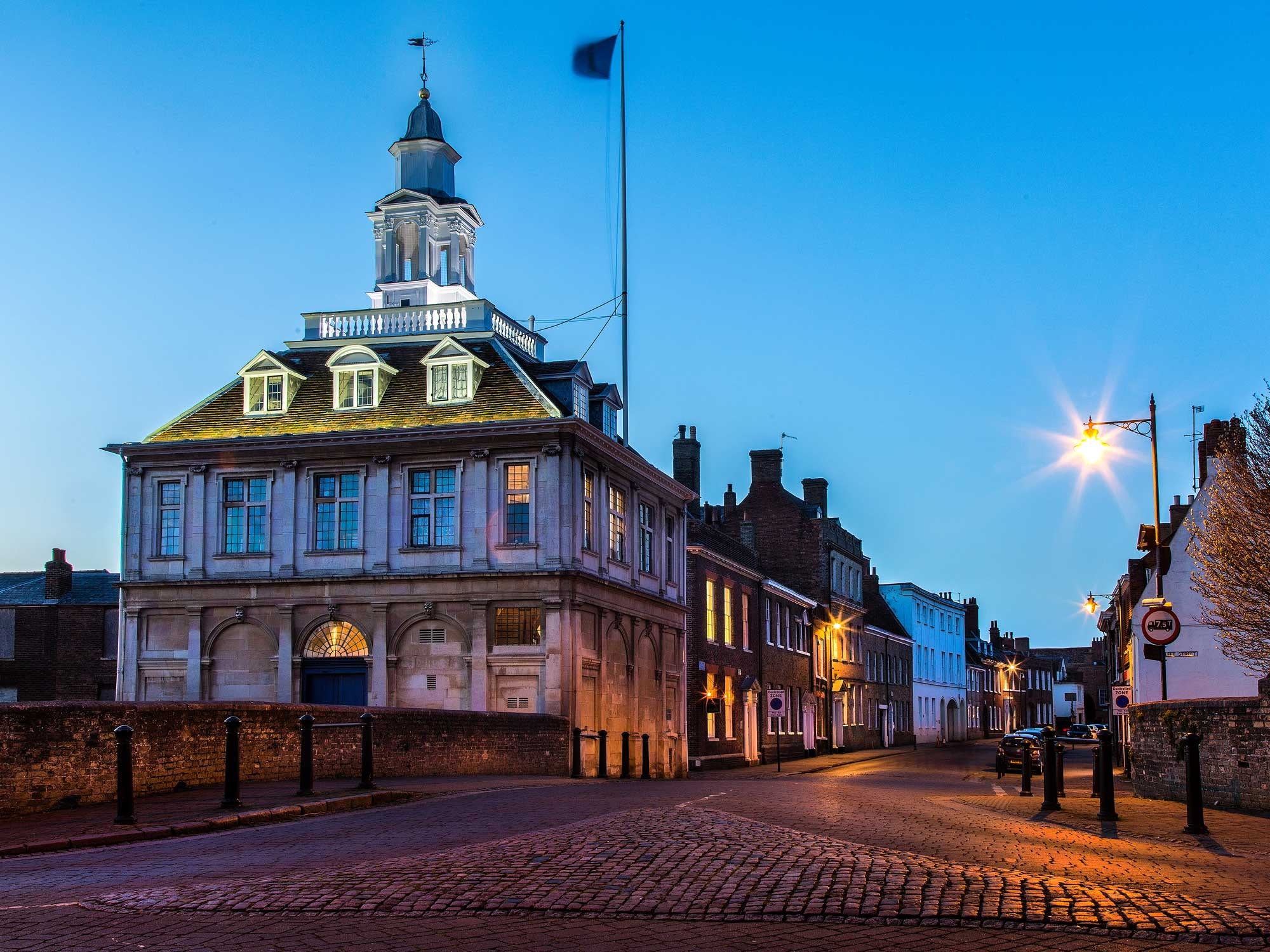
How Henry Bell changed the face of King’s Lynn
A contemporary of Sir Christopher Wren, the multi-talented Henry Bell was inspired by his European travels to build two of the most iconic buildings in King’s Lynn.
Henry Bell was an architect, artist, writer, merchant, alderman and mayor of King’s Lynn two times. He was a very talented man. David Higgins, in his book The Ingenious Mr Henry Bell, His Life, His Work, His Legacy, His King’s Lynn writes that Bell spent most of his life in the town but that “knowledge of his achievements gradually faded” – and it took 200 years for local historians to start researching and providing us with the information we have today. It’s somewhat ironic, as architectural historian Nikolaus Pevsner described the building Bell is best remembered for – the Custom House – as “one of the most perfect buildings ever built” and one that has become an iconic symbol of King’s Lynn.
Unfortunately, much of Bell’s work no longer exists and we have to rely on local historians and historical drawings to provide us with evidence of his work.
Although his family wasn’t originally from the town, Henry Bell was a native of King's Lynn. He was born there in 1647, the fourth (and only surviving) child in the family, and the second son to bear the name Henry. His father, also named Henry, was apprenticed to the textile merchant William Williams, and he gained the Freedom of the Borough in 1640 at the age of 24 – which allowed him to provide a comfortable life for his family and play a leading part in the political life of the town, including becoming Mayor.
Henry junior’s education was a family affair, being taught by his uncle Edward Bell, who was the Master at the free school. He was then admitted to Gonville and Caius College, Cambridge at the age of 13, where his tutor was also his cousin William Adamson.
Bell graduated in March 1665 with a Bachelor of Arts degree and it’s thought he then embarked on the ‘Grand Tour’ of Europe in 1667. Returning to King’s Lynn two years later, Bell continued his father’s business producing and exporting linseed oil and other commodities. And following in his father’s footsteps, he was granted the Freedom of the Borough at 24, joining the council in 1679, being promoted to Alderman, and becoming mayor in 1692 and 1703.
Henry Bell married Ann Bromley, a local girl 13 years his junior, in February 1677 and the couple went on to have 11 children – although as was common at the time only seven survived to adulthood.
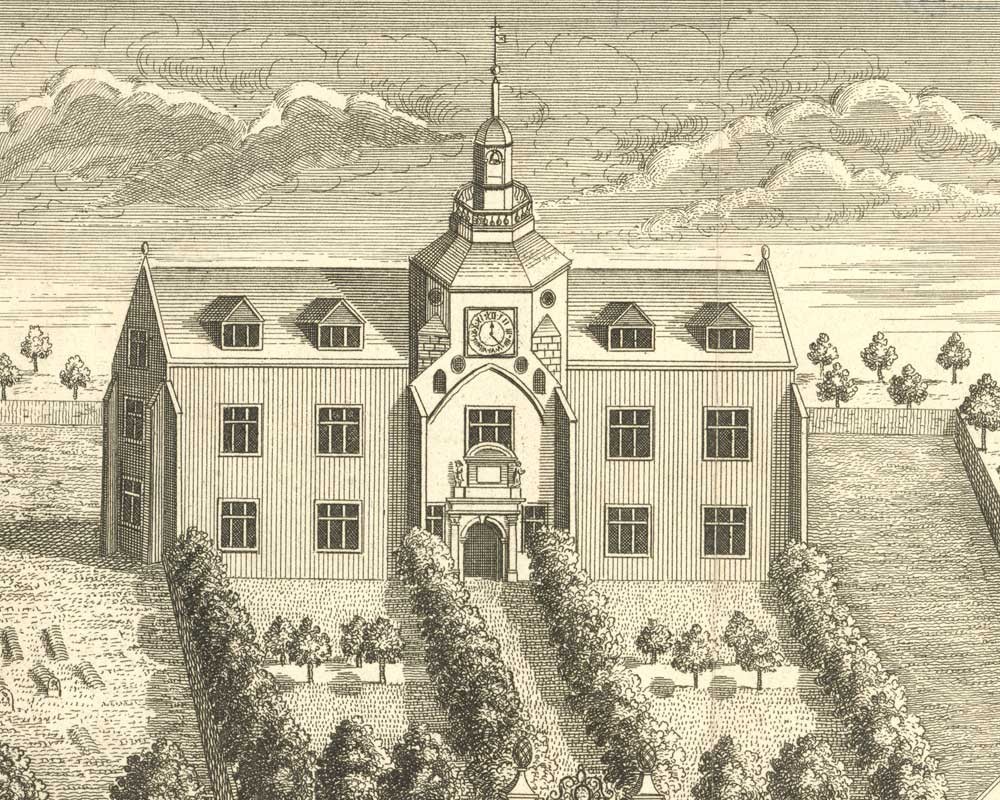
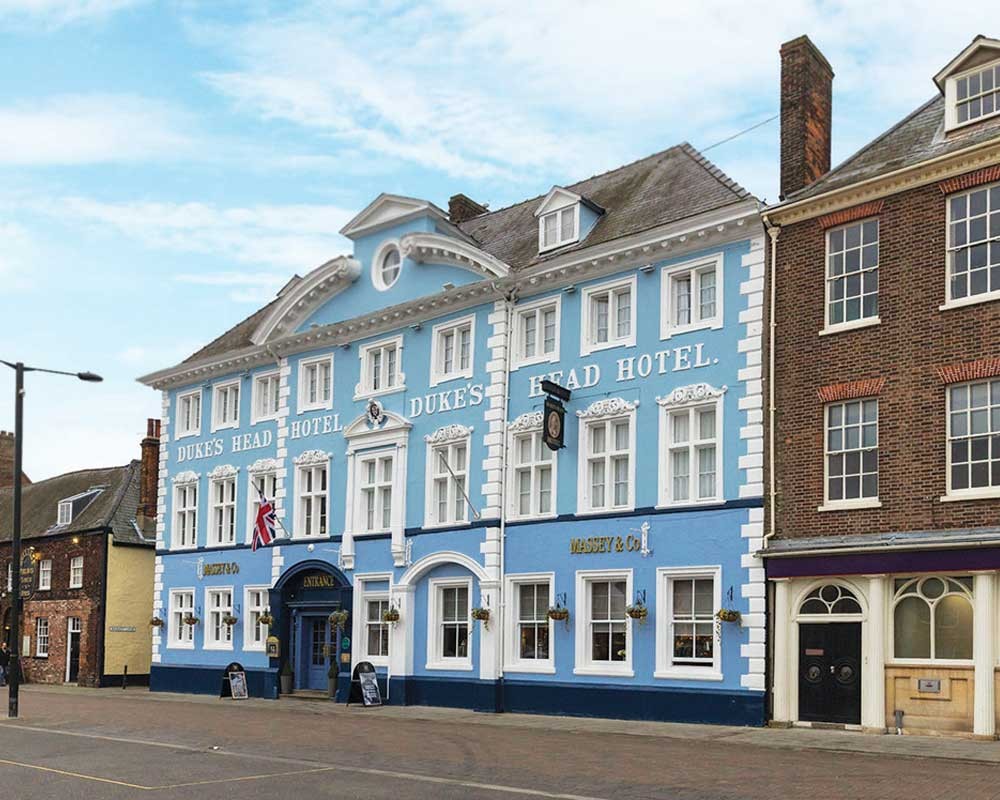
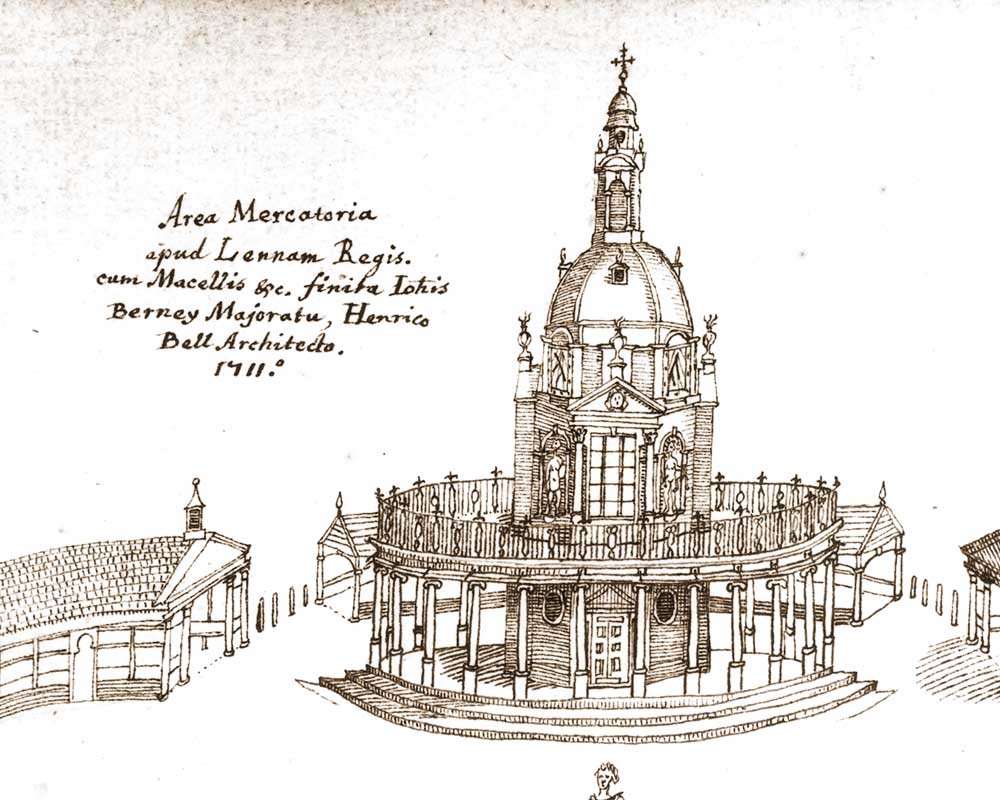
Unfortunately, much of Bell’s work no longer exists and we have to rely on local historians and historical drawings to provide us with evidence of his work
Bell was a talented artist. His Groundplan of King’s Lynn and Prospect of King’s Lynn from the West provide us with detailed information of the town’s appearance during the Stuart period, and many of his prints of King’s Lynn completed between 1670 and 1695 still survive.
Bell wasn’t only active in King’s Lynn. When the centre of Northampton was destroyed by fire in September 1675, Bell was one of those chosen to play a part in its rebuilding. He definitely designed the town’s All Saints Church but lack of documentary evidence has led to uncertainty as to what else he may have been involved with. One building, the Peacock Hotel (which was demolished in 1960) had such a resemblance to the Duke’s Head Hotel in King’s Lynn that it’s generally considered to have been designed by Bell.
Henry Bell’s first major building project in King’s Lynn is believed to be that of St James Workhouse, which involved transforming an existing building. He was later appointed Governor of the completed workhouse, a position he held for most of his life.
As a member of the political elite of the town, Bell would have been well known to the influential local merchants, and they hired him to design buildings that would reflect their importance.
One of these was Sir John Turner, who was to become MP for King’s Lynn for over 30 years. Bell became friends with Turner while he was working on the new organ loft in St Margaret’s Church, and it was Turner who commissioned Bell for the work he’s most remembered for; the Custom House.
Turner wanted somewhere suitably grand to conduct his business. He owned the first property in what we now know as King Street and purchased the piece of land opposite. Originally designed with an open colonnaded ground floor housing a Merchant Exchange with the customs office on the first floor, it was finished in 1683, although it wasn’t occupied until 1685. The location was convenient for Turner as he could simply walk out of his door and be in the Exchange within a few yards. By 1717, the ground floor was enclosed and the customs office occupied the whole building.
The next work Turner commissioned Bell to design was the Duke’s Head Hotel on the town’s Tuesday Market Place, a place for wealthy foreign merchants to stay. The Tuesday Market Place showcased much of Henry’s work in his lifetime but due to a number of unfortunate events, only the Duke’s Head Hotel remains today.
Turner’s brother Charles enlisted Bell to design a mansion for him adjacent to the site now occupied by Fraser Dawbarns LLP, but this was later destroyed by fire. Bell’s final building was an imposing octagonal Market Cross, which stood tall in the Tuesday Market Place but had to be demolished due to subsidence in 1831.
When his uncle died without heir in 1678, Bell inherited property in North Runcton, Middleton and King’s Lynn. While living in North Runcton Hall, Bell began work on rebuilding the village’s All Saints Parish Church in 1703 but he didn’t live to see it finished, dying two years before its completion.
Bell also designed altarpieces for both St Margaret’s church and St Nicholas’ chapel – but neither have survived. In 1708, Simon Taylor, a friend of John Turner, commissioned the Georgian remodeling of the façade of Clifton House in Queen Street – a project which is thought to be the work of Henry Bell.
Henry Bell died in 1711 at the age of 64, and was buried in the south aisle of St Margaret’s Church. Like many of his buildings, his ledger stone can no longer be seen – it was destroyed in the great storm of 1741 when the church steeple fell into the nave. He does, however, have an enduring memorial in the form of two of the most recognisable buildings in King’s Lynn – the Duke’s Head Hotel and the perfectly-proportioned Custom House.
